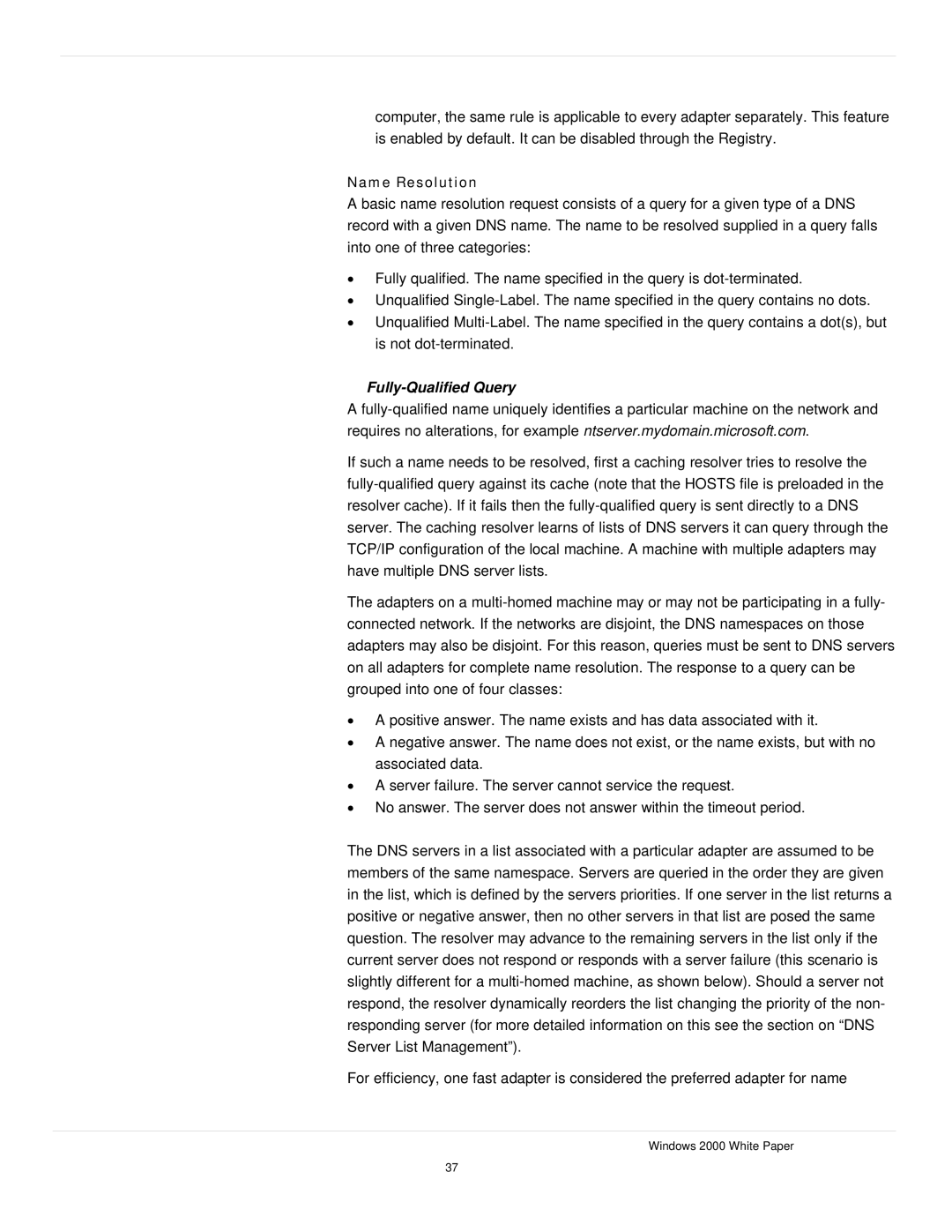
computer, the same rule is applicable to every adapter separately. This feature is enabled by default. It can be disabled through the Registry.
Name Resolution
A basic name resolution request consists of a query for a given type of a DNS record with a given DNS name. The name to be resolved supplied in a query falls into one of three categories:
•Fully qualified. The name specified in the query is
•Unqualified
•Unqualified
Fully-Qualified Query
A
If such a name needs to be resolved, first a caching resolver tries to resolve the
The adapters on a
•A positive answer. The name exists and has data associated with it.
•A negative answer. The name does not exist, or the name exists, but with no associated data.
•A server failure. The server cannot service the request.
•No answer. The server does not answer within the timeout period.
The DNS servers in a list associated with a particular adapter are assumed to be members of the same namespace. Servers are queried in the order they are given in the list, which is defined by the servers priorities. If one server in the list returns a positive or negative answer, then no other servers in that list are posed the same question. The resolver may advance to the remaining servers in the list only if the current server does not respond or responds with a server failure (this scenario is slightly different for a
For efficiency, one fast adapter is considered the preferred adapter for name
Windows 2000 White Paper
37
